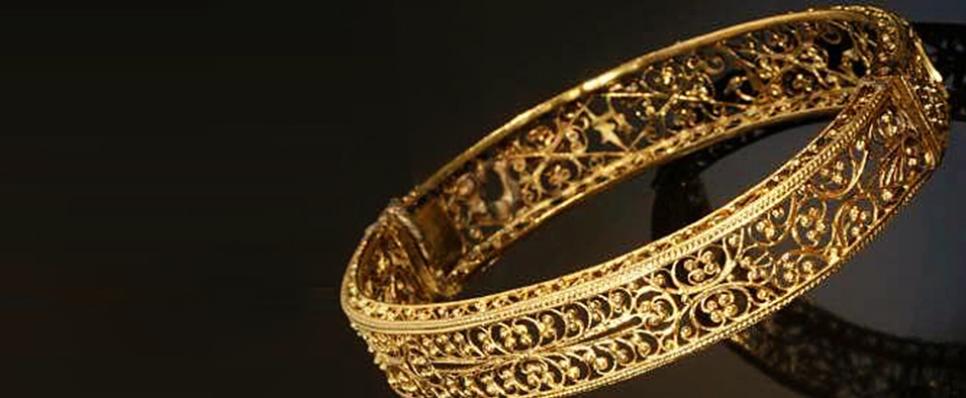Published: 31 Aug 2017
Mesmerizing gold filigree jewellery

Indian gold jewellery is renowned all over the world for its captivating designs. The intricate and exquisite artwork ornamentations are always in high demand. These traditional forms of jewellery have takers from across the world.
Filigree is a style of traditional jewellery which came to India from Italy and Greece; the word ‘filigree’ comes from the word ‘filum’ being Latin for ‘thread’.
This art-form made its way from Italy and Greece into the Indian subcontinent. Filigree was first created in Mesopotamia and Egypt, specifically by the highly-skilled craftsmen from the Midyat city in the Mardin province of upper Mesopotamia. Filigree was known as ‘telkari’ in this region. It was around 2500 BC that the artwork gained popularity in the Asian continent.
To create a filigree piece of jewellery, first the jeweller takes firm gold wires and twists them to create a strong foundation for the design. The twisted wire is then moulded into a variety of shapes, often circular. Piece are often enhanced with what is called ‘granulation’, which is when small beads of gold are soldered at intervals into the filigree pattern.
In ancient India, the filigree craftsmen visited the customer’s house for constructing the desired gold ornament. The craftsman was given gold coins or rough pieces of yellow metal which were weighed and then heated in a charcoal pan. Thereafter, the fine gold wires were formed to craft the filigree work. This process took place in the courtyard or verandah of the customer’s house. Besides gold ornaments, filigree was used to craft exquisite pieces for auspicious occasions.
The filigree designs are inspired by Indian mythology: statues of Gods and Goddesses, inscriptions on temples and the surrounding flora and fauna. Interestingly, the filigree craftsmen use over ninety types of wires including spirals, creepers and curls that fill the outlines of their artwork.
The filigree designs are similar to that of Ajoure. The only difference is that in filigree technique the holes are incorporated during the process of making, while in Ajoure the holes are cut from the metal.
The intricate art of filigree jewellery continues to be a much-loved into the modern day. More recently, it has become popular to style it not only with ethnic, Indo-Western outfits but also with Western clothing to give it a fresh new look.











